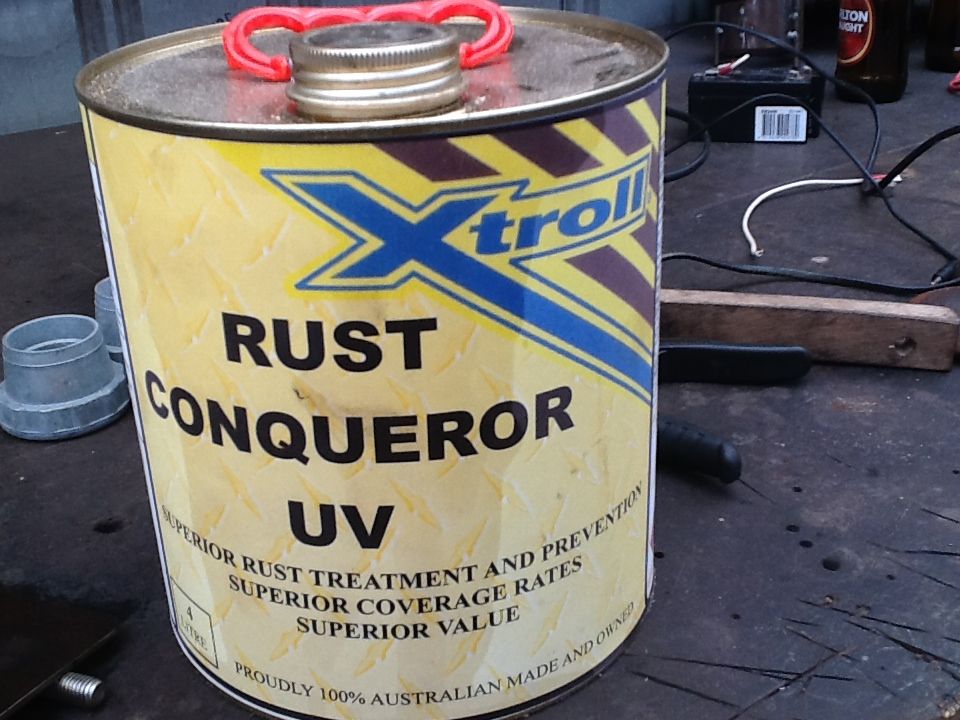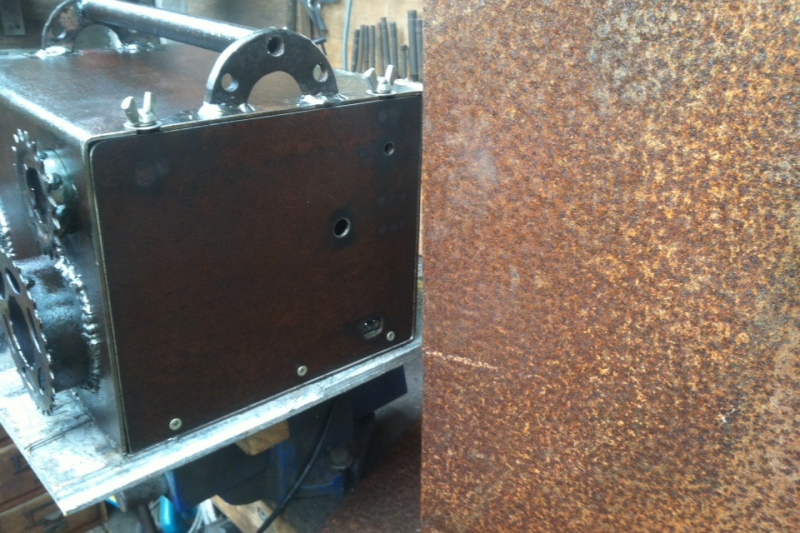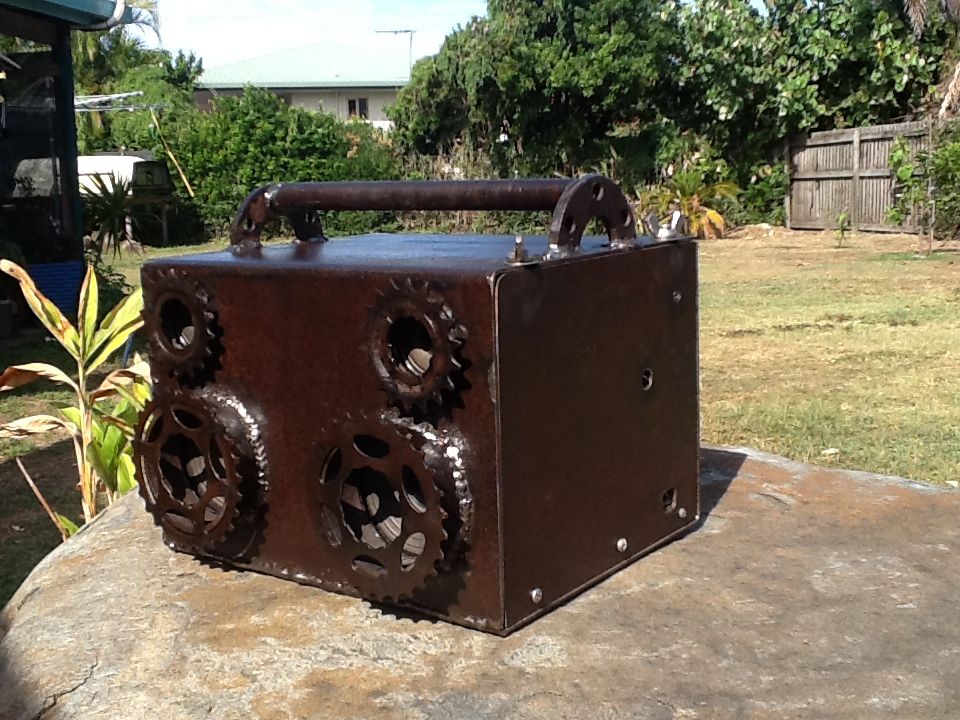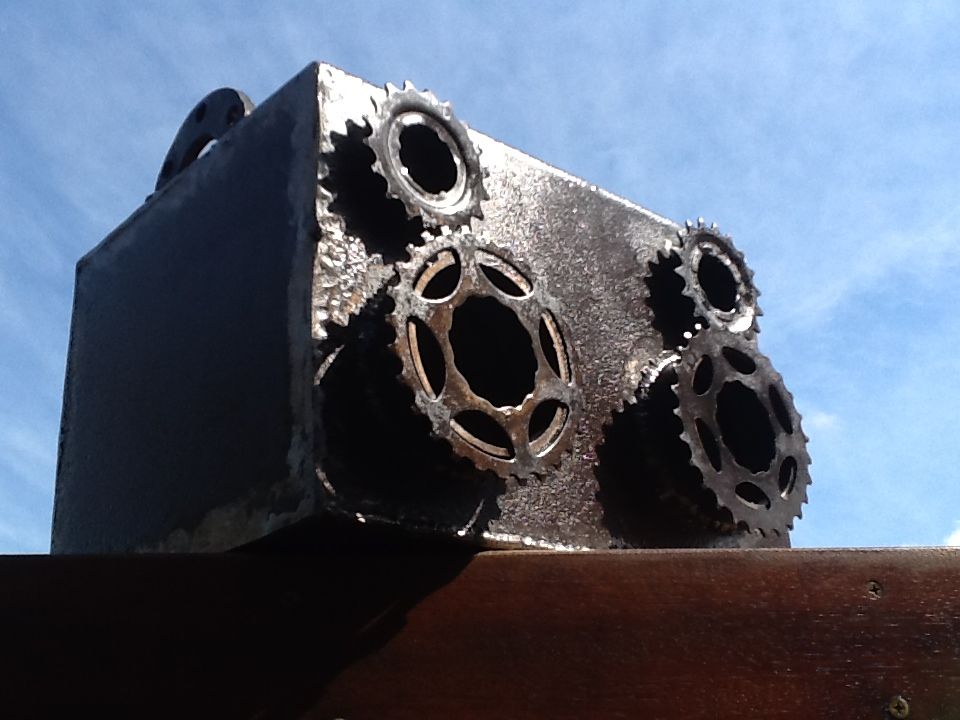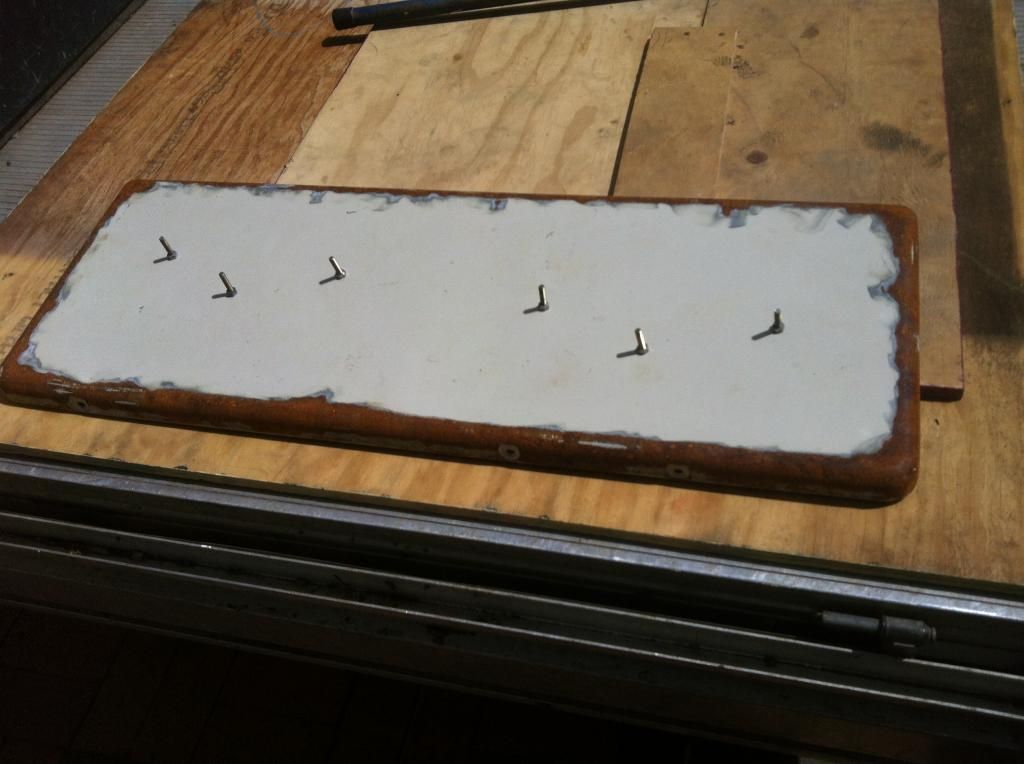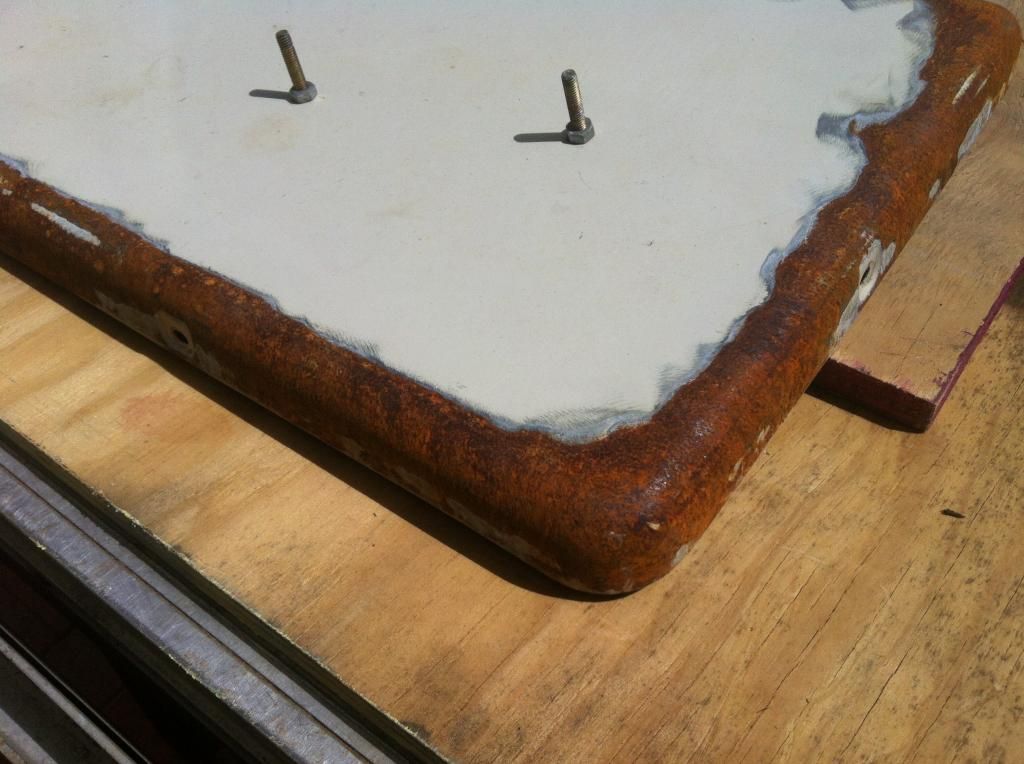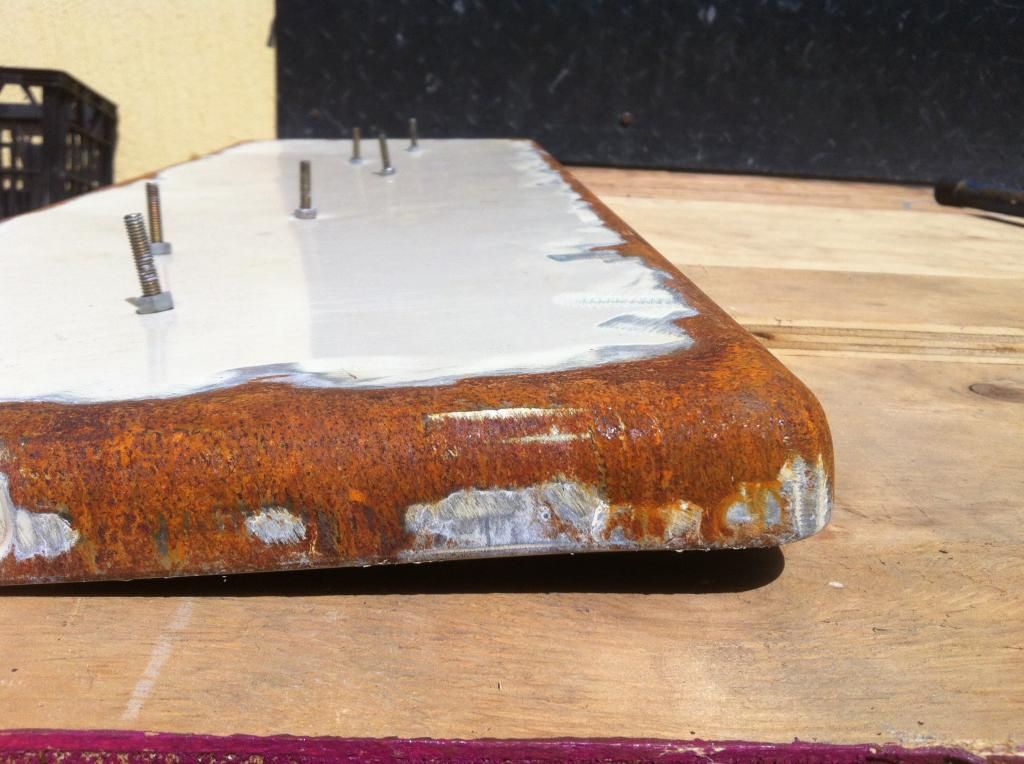- Joined
- Oct 17, 2014
- Messages
- 306
- Reaction score
- 188
I've been playing with both removing, creating and preserving rust a bit lately.
First: Electrolytic rust removal.
I had been doing a lot of reading about the different ways to remove rust without using abrasives.
There's all sorts of ways to do it, soak in vinegar, molasses and all kinds of liquids.
But the one that seemed most interesting to the mad scientist in me was the electronic way.
So here's what I made, based on info from the net.
A tub with metal rods attached to the sides, connected with wire (Do not use stainless as it produces toxic gas)
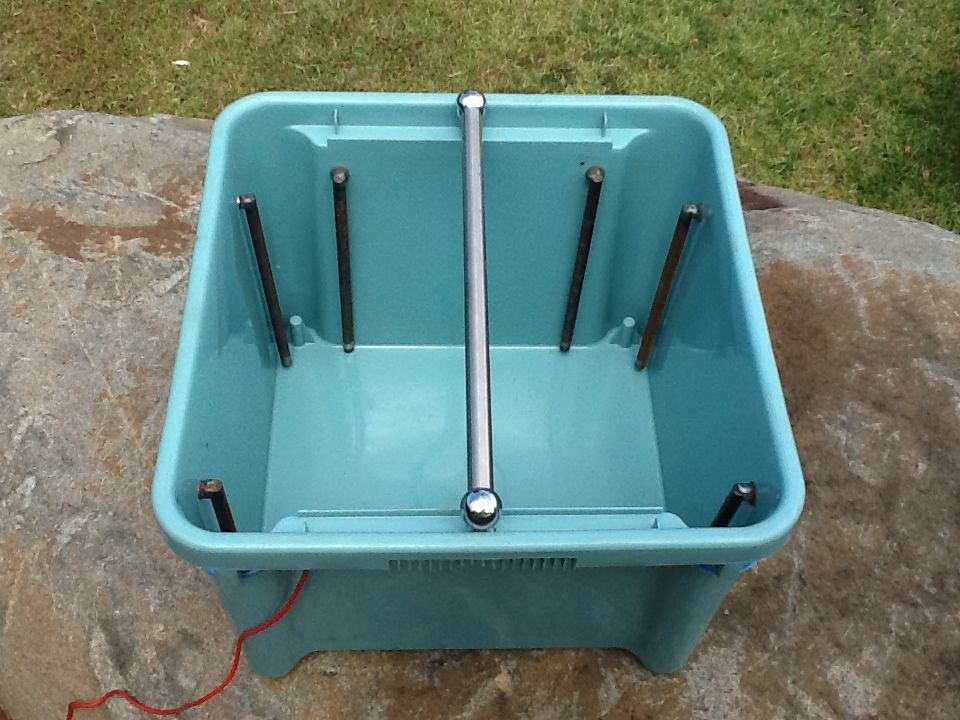
A bar across the top to hang the item from
A clamp from an old battery charger (I think)
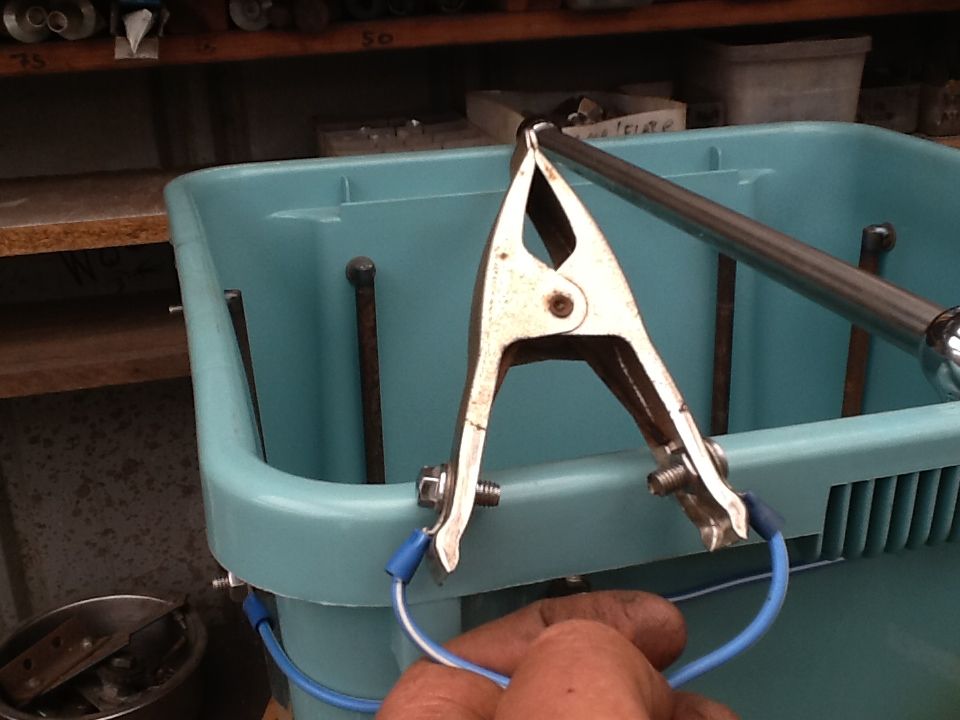
All wired up for the power supply
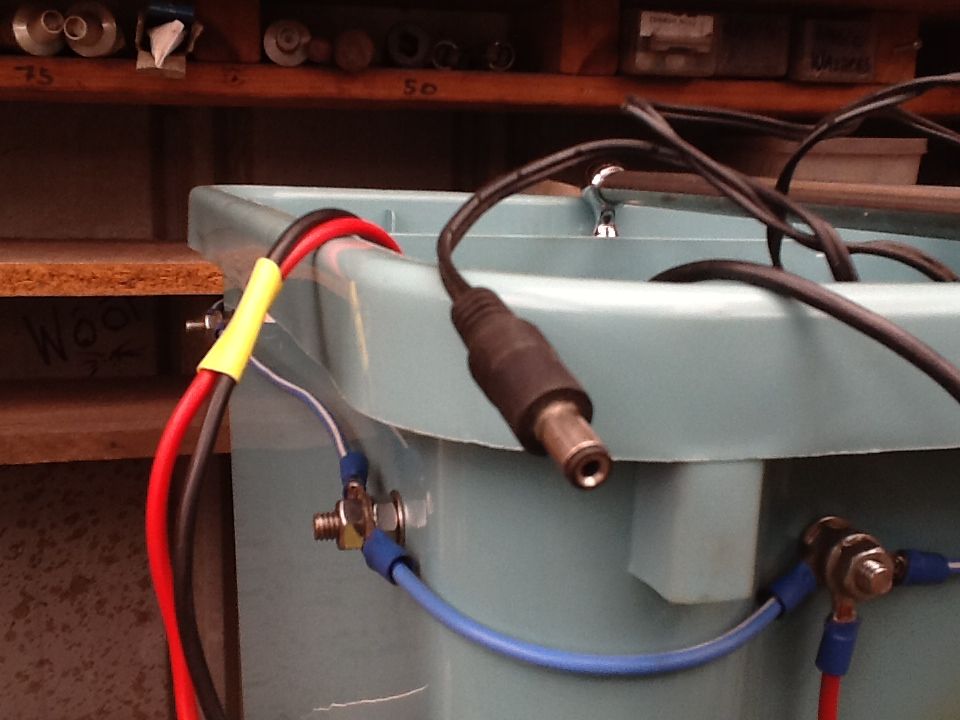
Which is from an old computer.
Puts out 12V DC at about 14A
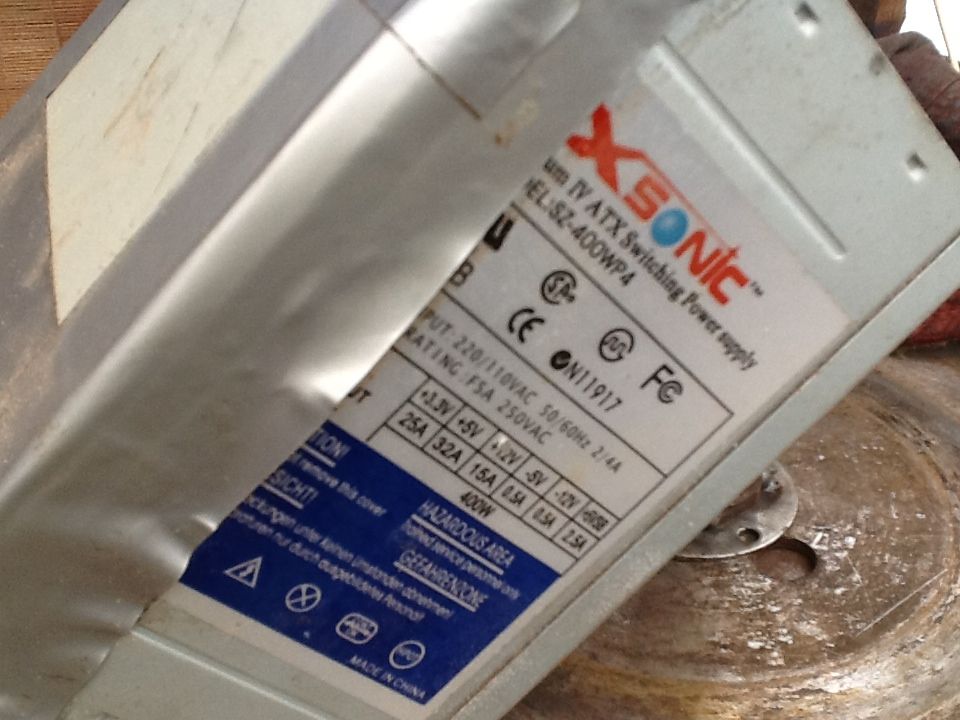
And you'll need some of this:
Baking soda/Bicarb soda or Wash soda/Lectric soda
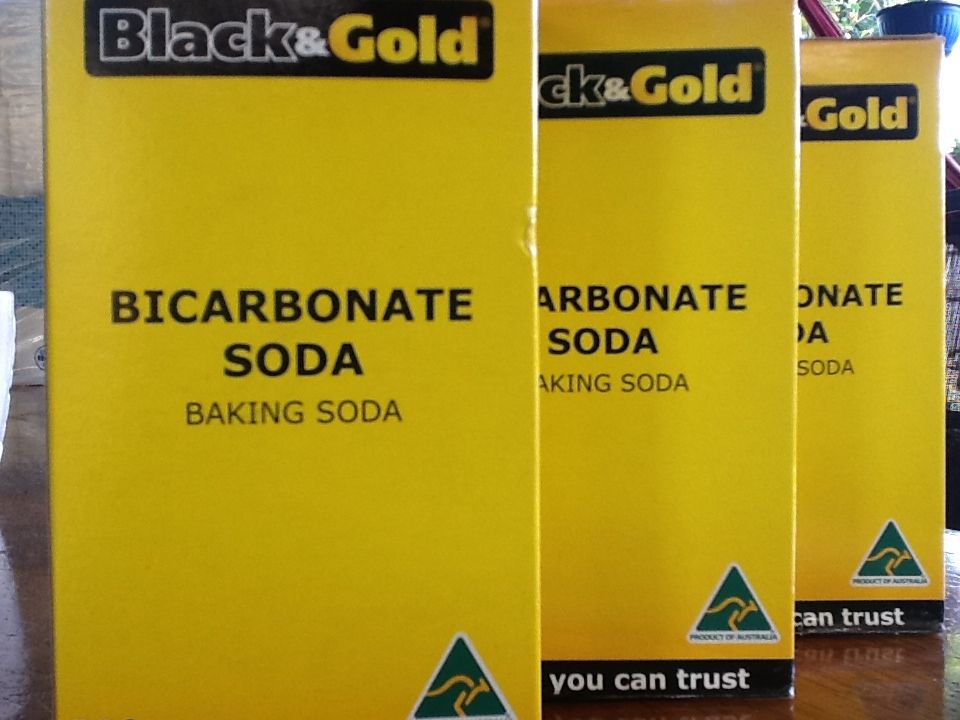
Hook the POSITIVE to the metal bars in the water and the NEGATIVE to the item to be stripped of rust.
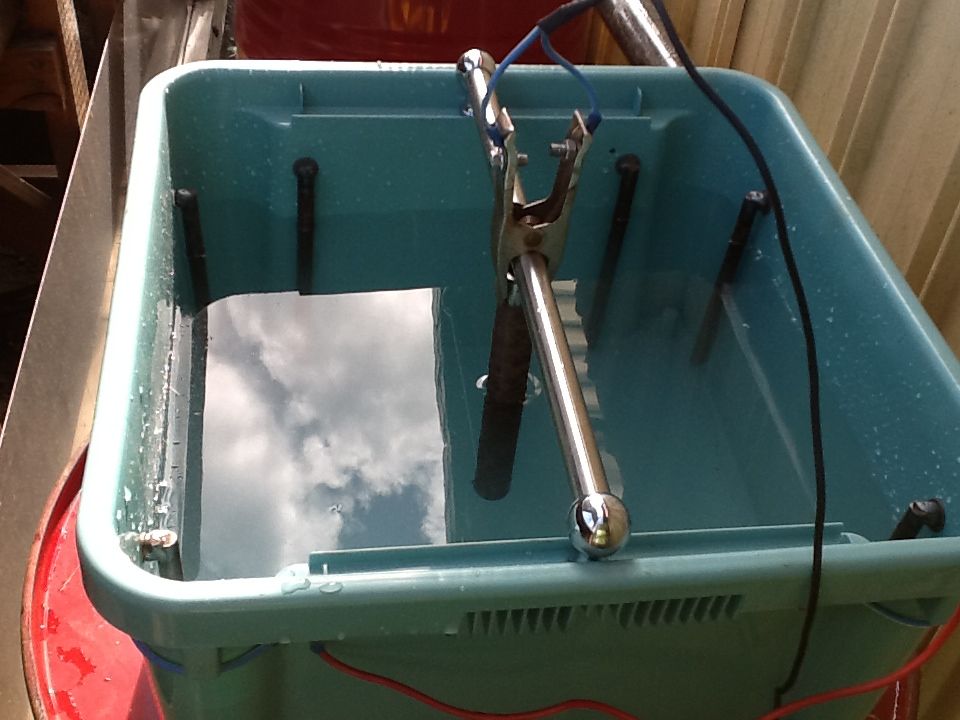
It starts bubbling and fizzing immediately
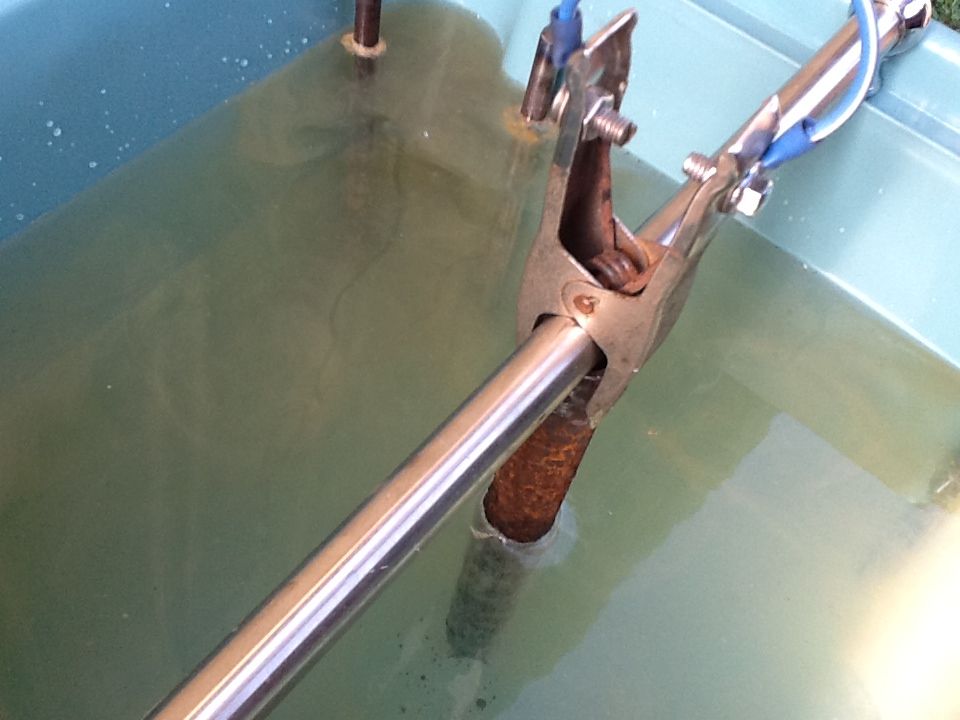
After about 20 Min...
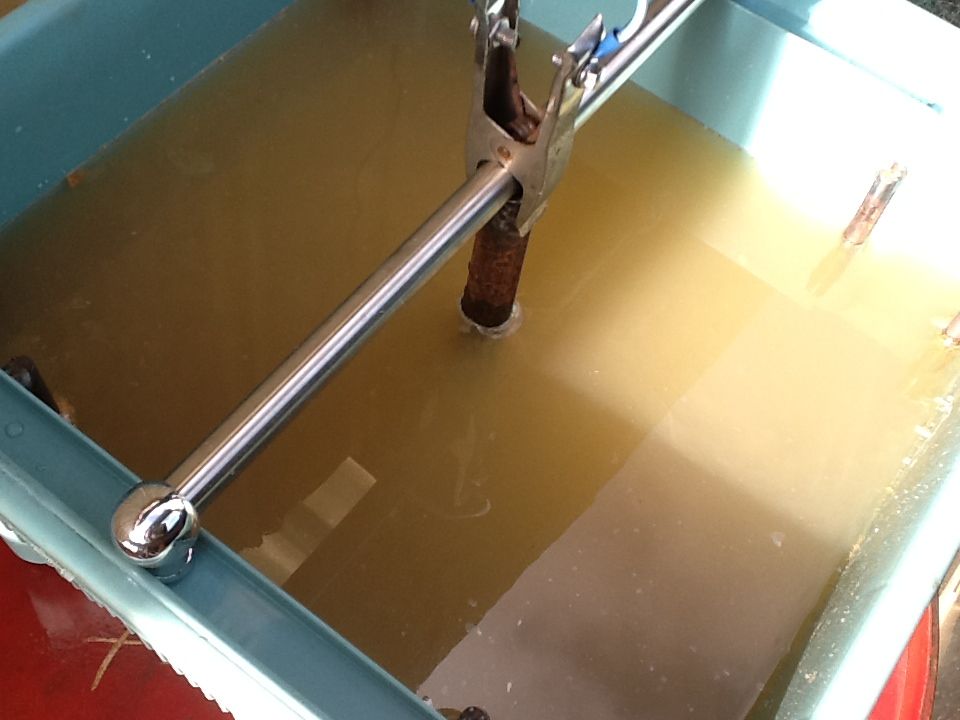
After two hours
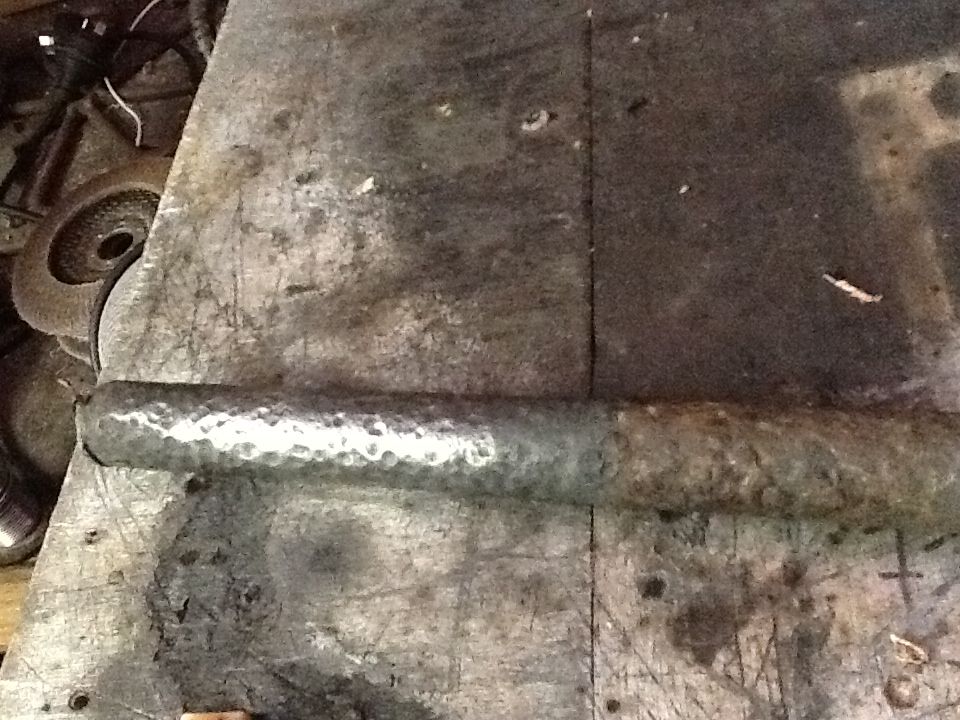
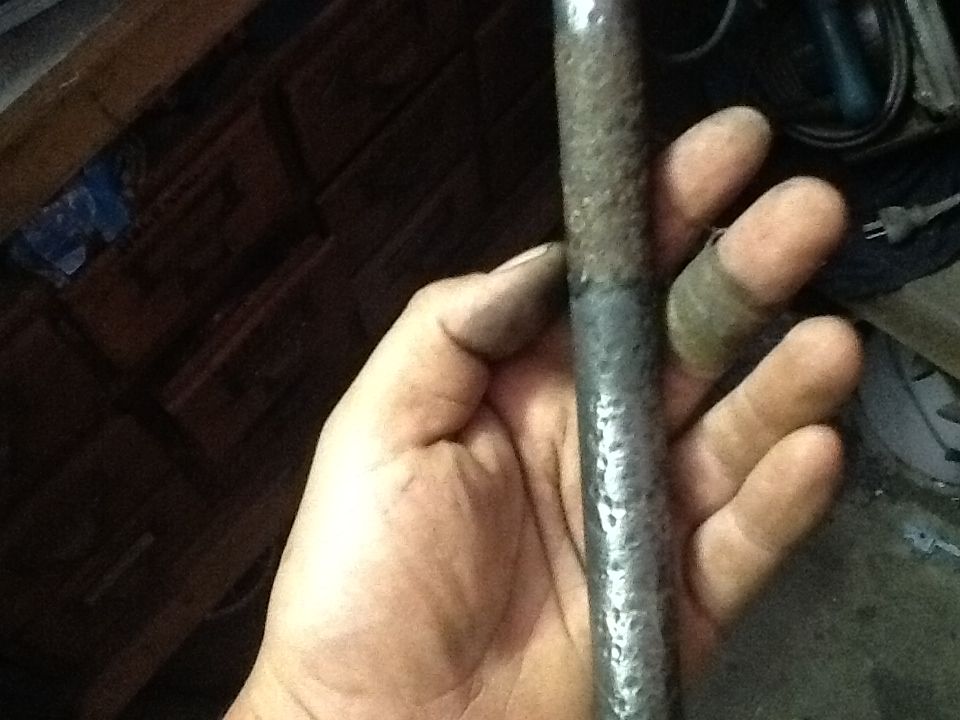
The next day all the rust has settled on the bottom
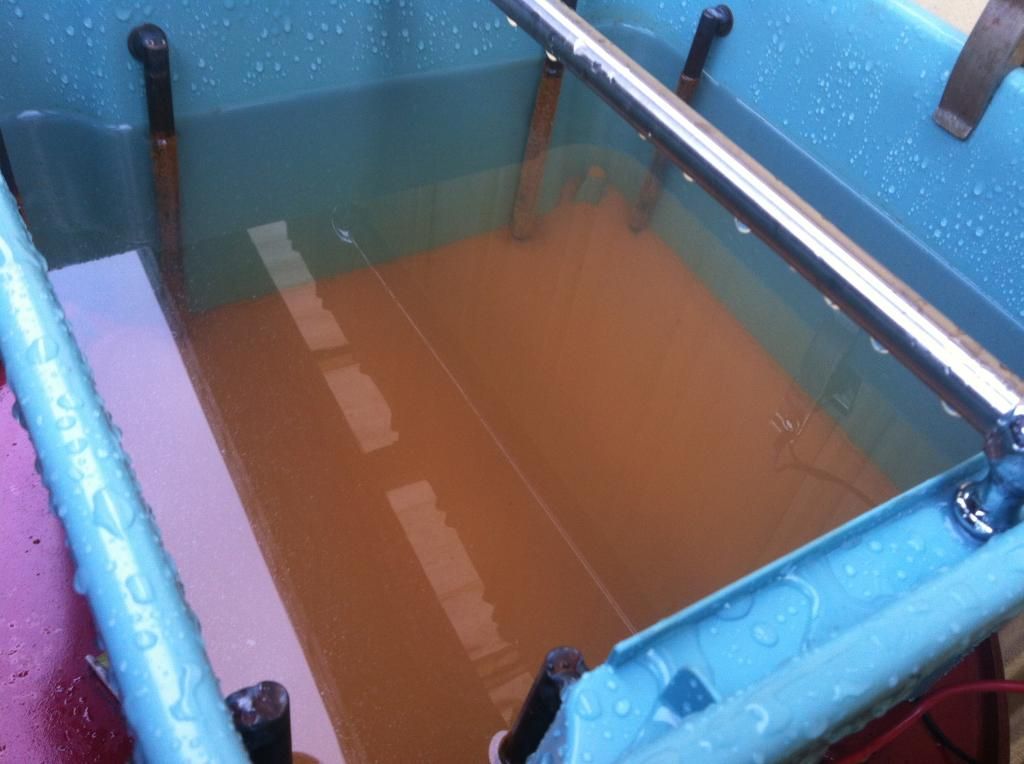
I'm thinking of adding a tap to the bucket so I can drain the liquid, which can be reused, and scrape the sludge out.
The amount of rods also needs to be increased when doing larger items.
More rods to attract the rust than the surface area of the item you're clearing is recommended.
Might make a grid setup which can easily be removed and cleaned as the rods need a bit of wire brushing every now and again.
The process can be reversed to create rust as well, but I've not tried that yet.
Some people use bigger tubs and an ARC welder.
Car battery charger works too, but an older, more basic one is better as the new modern ones are too "clever" and have regulators etc which may not deliver a high amperage.

First: Electrolytic rust removal.
I had been doing a lot of reading about the different ways to remove rust without using abrasives.
There's all sorts of ways to do it, soak in vinegar, molasses and all kinds of liquids.
But the one that seemed most interesting to the mad scientist in me was the electronic way.
So here's what I made, based on info from the net.
A tub with metal rods attached to the sides, connected with wire (Do not use stainless as it produces toxic gas)

A bar across the top to hang the item from
A clamp from an old battery charger (I think)

All wired up for the power supply

Which is from an old computer.
Puts out 12V DC at about 14A

And you'll need some of this:
Baking soda/Bicarb soda or Wash soda/Lectric soda

Hook the POSITIVE to the metal bars in the water and the NEGATIVE to the item to be stripped of rust.

It starts bubbling and fizzing immediately

After about 20 Min...

After two hours


The next day all the rust has settled on the bottom

I'm thinking of adding a tap to the bucket so I can drain the liquid, which can be reused, and scrape the sludge out.
The amount of rods also needs to be increased when doing larger items.
More rods to attract the rust than the surface area of the item you're clearing is recommended.
Might make a grid setup which can easily be removed and cleaned as the rods need a bit of wire brushing every now and again.
The process can be reversed to create rust as well, but I've not tried that yet.
Some people use bigger tubs and an ARC welder.
Car battery charger works too, but an older, more basic one is better as the new modern ones are too "clever" and have regulators etc which may not deliver a high amperage.

Last edited:





